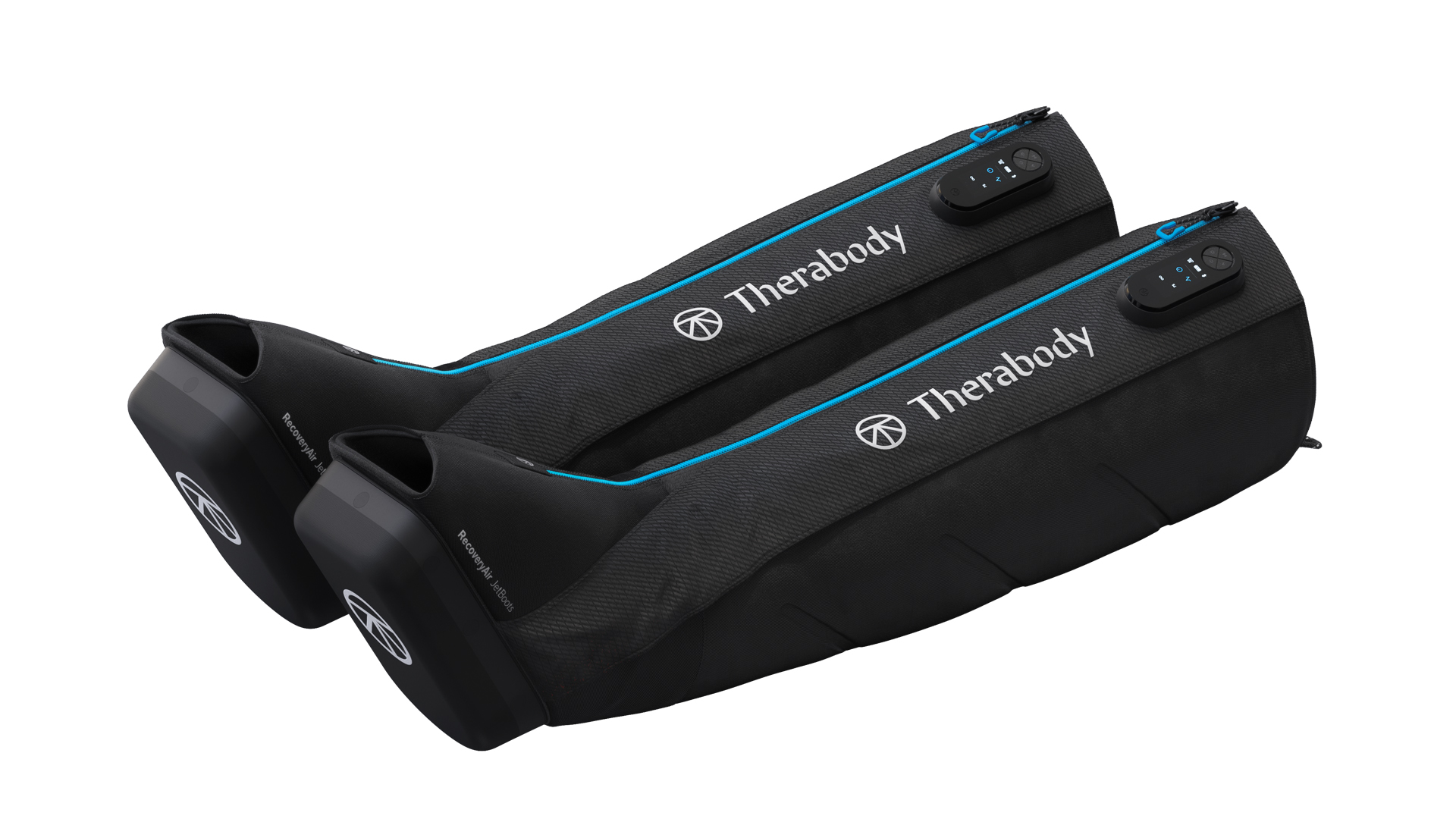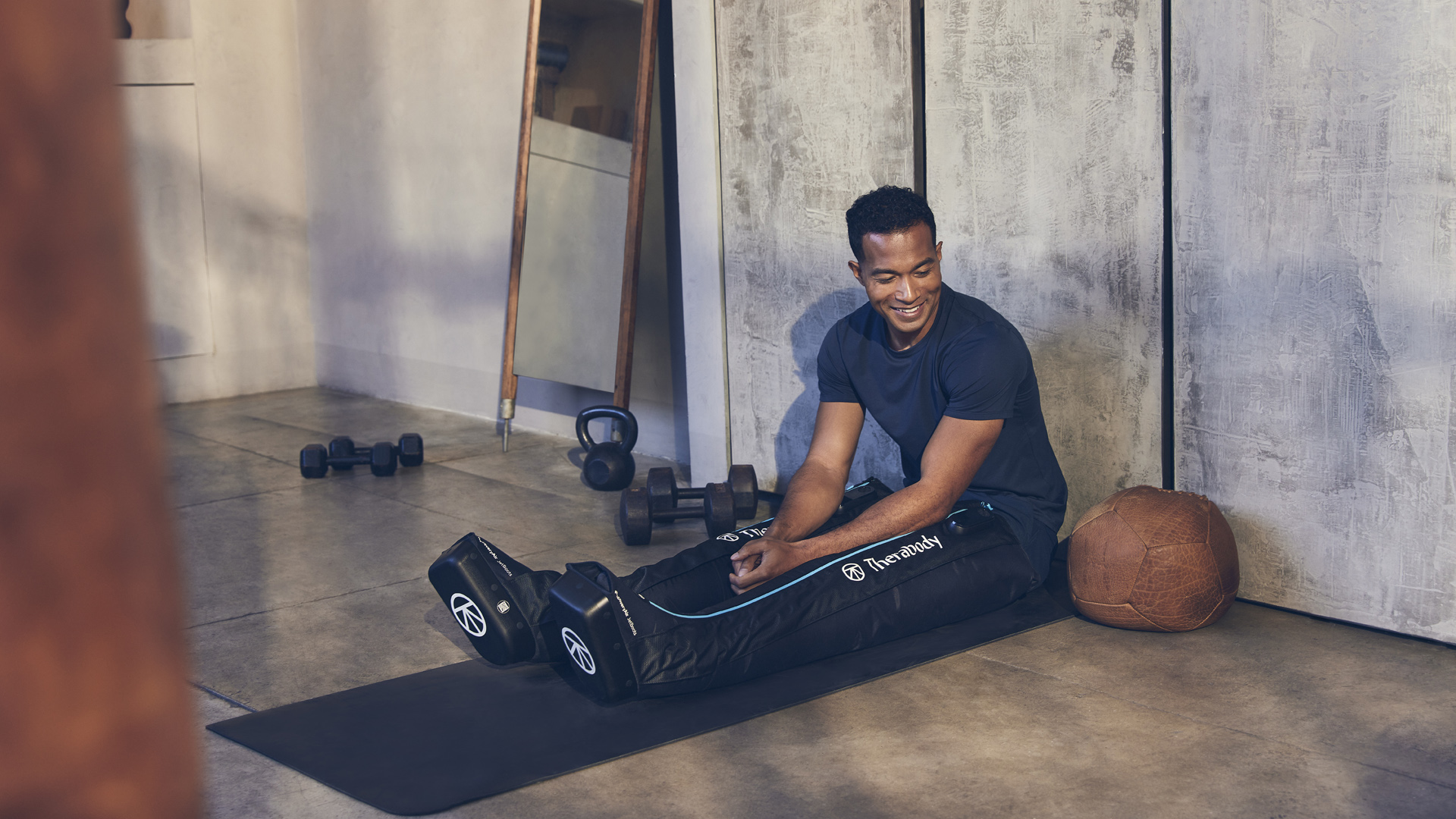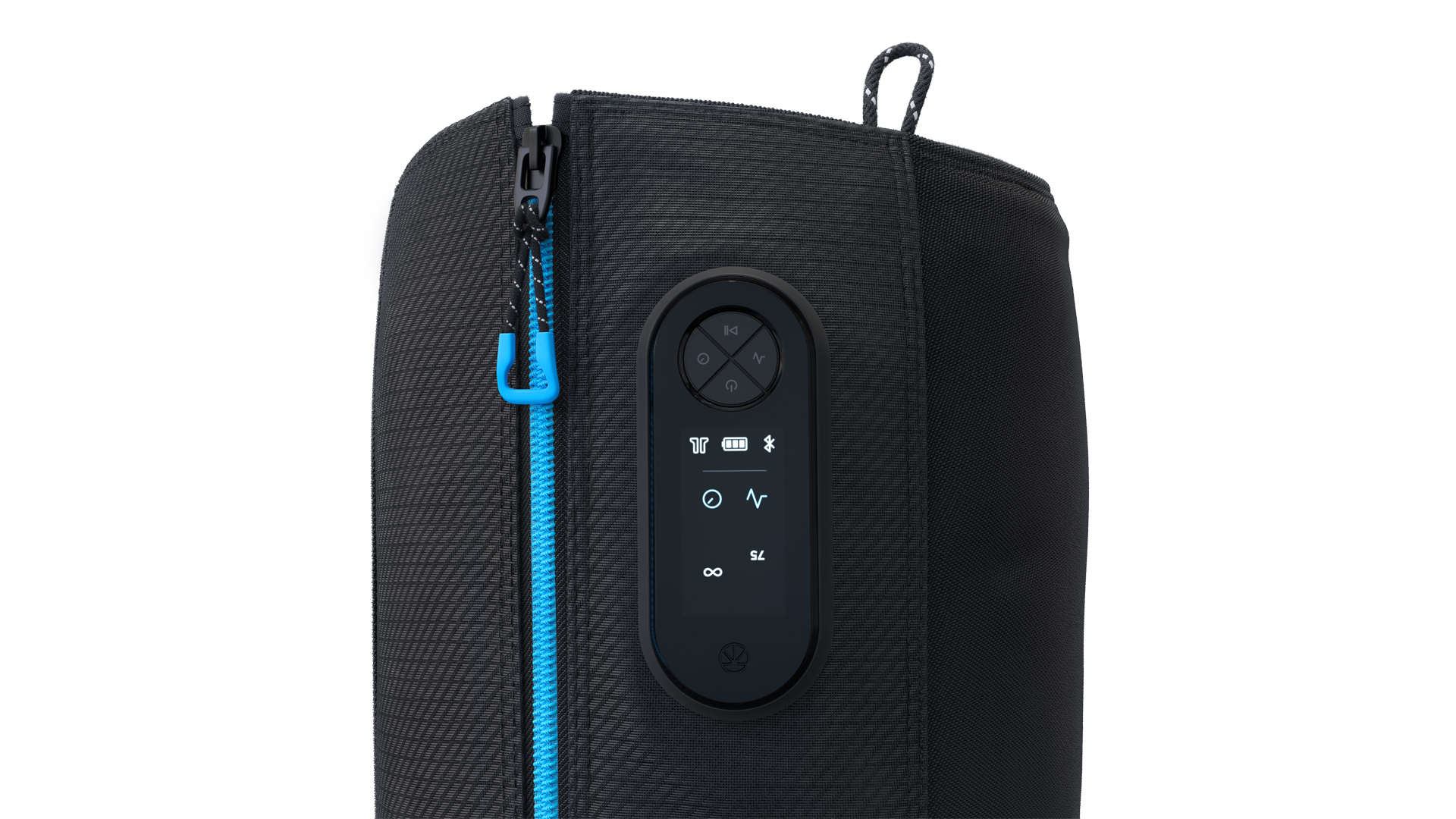To test the latest Therabody product, I did the unthinkable: absolutely destroyed my hamstrings with a leg day workout
Is there a better way to measure recovery than by obliterating my legs with squats and Romanian deadlifts? I don't think so.


Read my full Therabody RecoveryAir JetBoots review!
Being a journalist covering smart fitness tech can sometimes be challenging. Not only do I have to work out all the time, even when I sometimes don't want to, but I also have to do everything I can to recover fast by eating clean and sleeping well, so I don't injure myself (too often anyway). Hence why I'm super keen on trying any product that promises faster recovery, like the new Therabody RecoveryAir JetBoots.
That said, it's hard to test how well any product helps recovery, mainly because they never claim to do the recovery for you. Not like this will ever stop me from trying! To put this new and innovative recovery tool through its paces, I thought it's only fitting if I did something terrible to my legs to test how well the boots help me recover.
That's right. I did a leg workout.
Therabody RecoveryAir JetBoots: Price and release date
The JetBoots are part of the new Therabody RecoveryAir range and are available to buy from today, 16 Feb 2022, directly from Therabody US,Therabody UK and Therabody AU for a recommended retail price of $899/£799/AU$989.
There is a cheaper model called RecoveryAir Prime that has the pneumatic device not integrated into the boots. It sells for $699/£599/AU$799.
The top-tier model is called RecoveryAir PRO, and it's aimed at professional athletes and sports organisations. This is the most customisable model with a PRO Mode with which you can adjust every parameter of your recovery experience. The PRO retails for $1299/£1129/AU$1499.
Get all the latest news, reviews, deals and buying guides on gorgeous tech, home and active products from the T3 experts

The JetBoots' pumps are intgrated into the boots themselves
Therabody RecoveryAir JetBoots: What is it and how it works
The JetBoots are the most innovative addition to the updated RecoveryAir line, a range of products using compressed air to aid recovery. This is a fully wireless device with the pump integrated into the bottom of the boots instead of tubes that connect to an external pump. For this reason, the boots are the most portable and convenient for everyday users such as myself.
The pumps found in all RecoveryAir products use pneumatic compression, a form of pressure massage in which a garment completely covering the legs or arm(s) inflates and deflates in a cyclical pattern over a period of time. The process is said to "flush out" fluids containing metabolic waste and ushers in fresh, nutrient-rich blood to the limbs, not dissimilar to the methodology behind blood flow restriction training (BFR).
But while BFR training requires you to actively flush out the system, RecoveryAir products are what Dr Jason Wersland, founder of Therabody, a "passive modality", meaning they can work their magic without you having to put in any effort. You literally just sit with your legs extended in front of you and let the boots pump away.
(For the record, BFR can be used as a recovery tool, too, but it's still a bit more fiddly than just sitting around.)
One of the biggest innovations of the RecoveryAir range is the FastFlush Technology that completes one full cycle in just 60 seconds, which is apparently 2-3 times faster than other pneumatic compression boots. Also, the more hygienic design uses non-porous medical grade material combined with internal overlapping chambers that provide one smooth surface - you can wipe them clean with a damp cloth after each use.

Sit tight while you recover
Therabody RecoveryAir JetBoots: Let's get recovered
Needless to say, I was super excited to give the RecoveryAir Jetboots a try. I use my legs all the time, whether it's testing the best running shoes and best workout shoes or doing full-body workouts; my legs are practically my main source of income! Anything that can help them recover faster and enable me to work more is welcome.
But instead of just going for a run, I decided to do a gruelling leg workout to see how well the Jetboots help me recover. I wanted to make sure my legs are sore and DOMS is present the best way I know how: by doing Romanian deadlifts, isometric calf raises, weighted vest box jumps and Bulgarian split squats. I was nearly crying by the end of the workout but I kept on reminding myself that it was all for the greater good.
I did a JetBoots session straight after the workout and two 20-minute sessions per day afterwards with varying degrees of compression.
The boots are super easy to use and better still, once both boots are turned on, they connect to each other so you don't have to set the same program on both legs; it'll be synchronised automatically.
(You can use the JetBoots individually, too, if that's what you want.)
The compression feels excellent and the ebb and flow of the device put you in a bit of a trance, something Dr Jason mentioned in his pre-launch presentation. He emphasised the importance of being present during the sessions by combining leg recovery with breathing exercises, for example. I completely agree; unless you pay attention to what you're doing, you won't see results anytime soon.
I really liked the convenience of using the RecoveryAir JetBoots: there are no cables or external units involved, all you have to slip into the boots and you're ready to go. Cleaning the boots was also easy-peasy.

It's easy to control the RecoveryAir JetBoots using the LED panel
This is all well but did the Therabody RecoveryAir JetBoots help me alleviate the effects of DOMS? I most certainly felt DOMS in my hamstrings and calves, even three days after the workout, so I'd say it's a bit of a mixed bag. I didn't use any massage guns or foam rollers on my legs – something I'd do otherwise to aid recovery – to see how the JetBoots perform.
It's possible that the RecoveryAir JetBoots helped recovery a little but I guess I was expecting them to completely block DOMS to happen. Clearly, I need to adjust these expectations a bit! It's also possible the JetBoots work better for other types of workouts such as running and cycling. Not to mention, I did shorter sessions and used different compression each time to see how they feel, so my findings are certainly not conclusive at this point.
All I can say after a few days of use is that the Therabody RecoveryAir JetBoots feel innovative and from a user experience point of view, they deliver in spades. Once I tested them more thoroughly and for different workouts, I'll be able to tell you if you should buy these pricey recovery boots.
If you'd excuse me, I must go now and slip into my Jetboots for another session.

Matt Kollat is a journalist and content creator who works for T3.com and its magazine counterpart as an Active Editor. His areas of expertise include wearables, drones, fitness equipment, nutrition and outdoor gear. He joined T3 in 2019. His byline appears in several publications, including Techradar and Fit&Well, and more. Matt also collaborated with other content creators (e.g. Garage Gym Reviews) and judged many awards, such as the European Specialist Sports Nutrition Alliance's ESSNawards. When he isn't working out, running or cycling, you'll find him roaming the countryside and trying out new podcasting and content creation equipment.